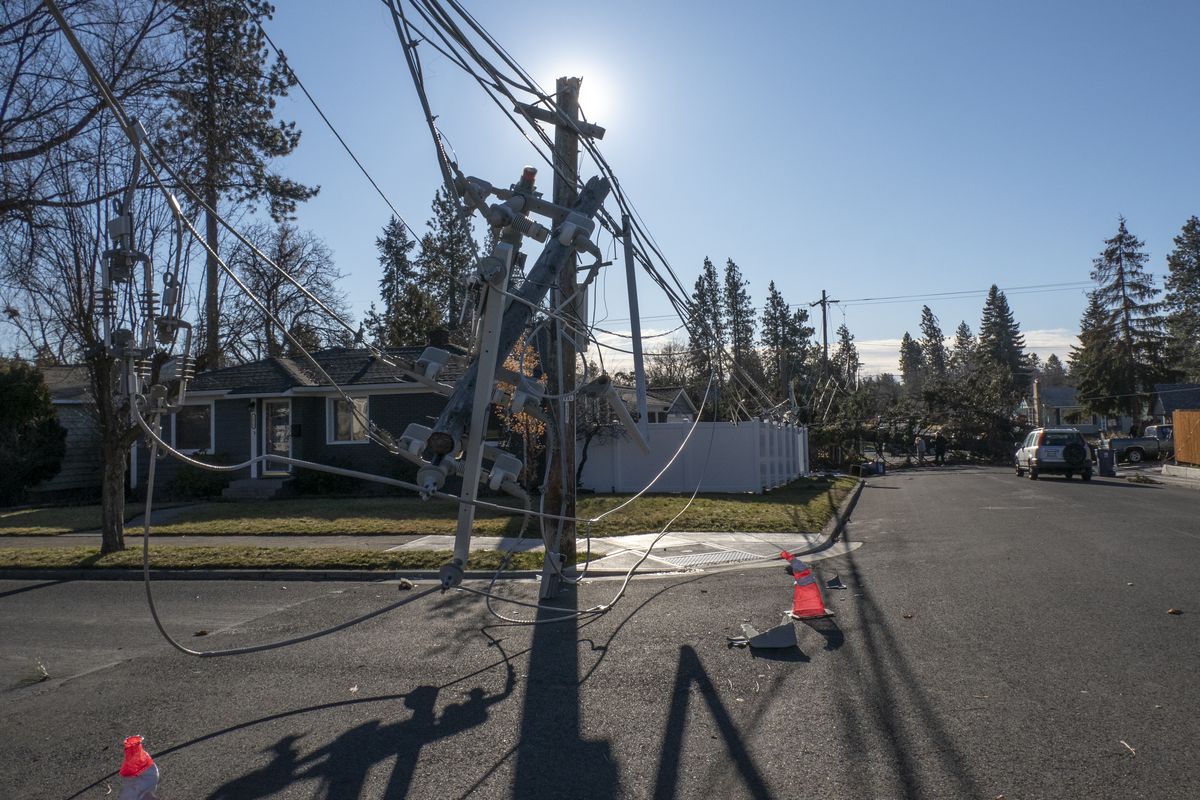After the latest windstorm, the question pops up again: Why don’t we bury power lines on the South Hill?

With every storm that pulverizes power poles and darkens dwellings on Spokane’s South Hill, the question rises above the whir of the chainsaws and backhoes.
Why not bury those power poles and avoid the widespread outages, like those that followed Wednesday morning’s wind event?
The question came after the ice storm in 1996, which knocked out power to some 100,000 homes after more than an inch of freezing rain fell on snowpack around town. It was reiterated in 2015, when a windstorm similar to the one that swept Spokane last week knocked out power to 180,000 customers, many of them in the 99203 ZIP code also hit hard by outages this year.
The answer is the same as it is in hurricane-prone areas of the South, and in the frigid regions of the Midwest and Northeast: Such work costs a lot of money, obstructs traffic and doesn’t solve all the problems of a compromised electrical grid.
“In general, moving overhead lines to underground in established neighborhoods is extremely costly, and this would be a cost that would impact customers,” wrote Casey Fielder, senior communications manager for Avista Utilities Corp., in an email Friday.
A specific challenge for the South Hill lies beneath its manicured lawns: a large mass of basalt.
“They’re sitting on a big rock,” said Marlene Feist, director of strategic development for the city’s public works division.
That’s the reason, in the 1980s and early ’90s, that the city elected not to dig into the rock face and separate sewer and stormwater pipes, as was done in areas north of the Spokane River. The city instead constructed massive subterranean tanks to trap the stormwater, an admission that the type of trenching that would be needed to lay new lines of pipe would be cost-prohibitive.
Avista estimates that burying transmission lines in urban areas with basalt rock would cost 20 times what it takes to build traditional overhead structures, or about $10 million per mile, Fielder wrote. That’s in addition to the challenges of securing easements from property owners, avoiding existing underground infrastructure and installing new equipment on homes and businesses to receive the underground lines.
Even digging and laying lines in more forgiving earth would cost a significant amount. Washington, D.C., public utility Pepco is in the midst of a multiyear, $1 billion project to “underground” all its power lines, work that falls upon ratepayers.
City Councilwoman Lori Kinnear lives just a few blocks from where a falling tree struck and killed a woman during Wednesday’s storm. Residents asked the utility to bury lines when Lincoln Street was being repaved in 2009, Kinnear said, but were told it would be too expensive.
“The street was torn up. It would have been a perfect time to put down cable,” she said.
The storm should steer more residents to consider solar panels, Kinnear said. That would cut down on transmission lines and prevent the type of widespread outages seen more frequently in recent years on the South Hill.
City Council President Breean Beggs, a South Hill resident first appointed to the panel after the 2015 windstorm, said he hasn’t heard any requests this year to move utility lines underground.
That’s a decision that would require Avista to make a request of the Washington Utilities and Transportation Commission, followed by an analysis of whether such an investment and any subsequent increases in rates would benefit ratepayers.
“I don’t see that happening anytime soon,” Beggs said, though he noted that within six years there have been two historic windstorms knocking out power to thousands not just on the South Hill, but throughout the region.
Avista is burying its transmission lines for new developments and assessing the “undergrounding” of existing lines as part of an effort launched not to combat outages during storms, but to prevent wildfires, Fielder wrote.